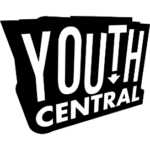Canada’s election system is often misunderstood, but it plays a key role in determining how the government operates. Many of us are just reaching voting age, and although the 2025 Federal election recently passed, understanding the system can help grasp how election results truly affect the political landscape.

- The Basics: A Parliamentary Democracy
Canada is a parliamentary democracy, meaning citizens vote for Members of Parliament (MPs) who represent their local areas, called ridings. Each riding elects one MP, and the party with the most MPs typically forms the government. The leader of that party becomes the Prime Minister.
- First-Past-the-Post: How the Winner is Chosen
Canada uses a “first-past-the-post” voting system, which means the candidate who gets the most votes in a riding wins, and there’s no need to secure a majority. For example, if there are three candidates, and one gets 40% of the vote, that candidate wins the seat, even if 60% of voters preferred other options.
- Political Parties and Their Leaders
Canada’s political parties run campaigns to win ridings across the country. The party that wins the most seats is invited by the Governor General to form the government. In a minority government (where no party has more than half the seats), the leader of the winning party must work with other parties to pass laws.
- What Happens After An Election?
After the election, the new government begins transitioning into office. The winning party leader, like Mark Carney, is formally invited by the Governor General to become Prime Minister and select a Cabinet. This team will oversee key areas like finance, health, and foreign affairs. Next, the Governor General delivers the Speech from the Throne, which outlines the government’s priorities. From there, Parliament reconvenes, and the government starts introducing bills to turn campaign promises into law. During this time, they are held accountable by Parliament to ensure their policies reflect the needs of the people.
Understanding how Canada’s election system works isn’t just important on election day—it helps you see how your vote fits into the larger picture and why certain issues matter when it comes to shaping policy. The results aren’t just about one candidate or one party; they’re about the collective will of the people.

